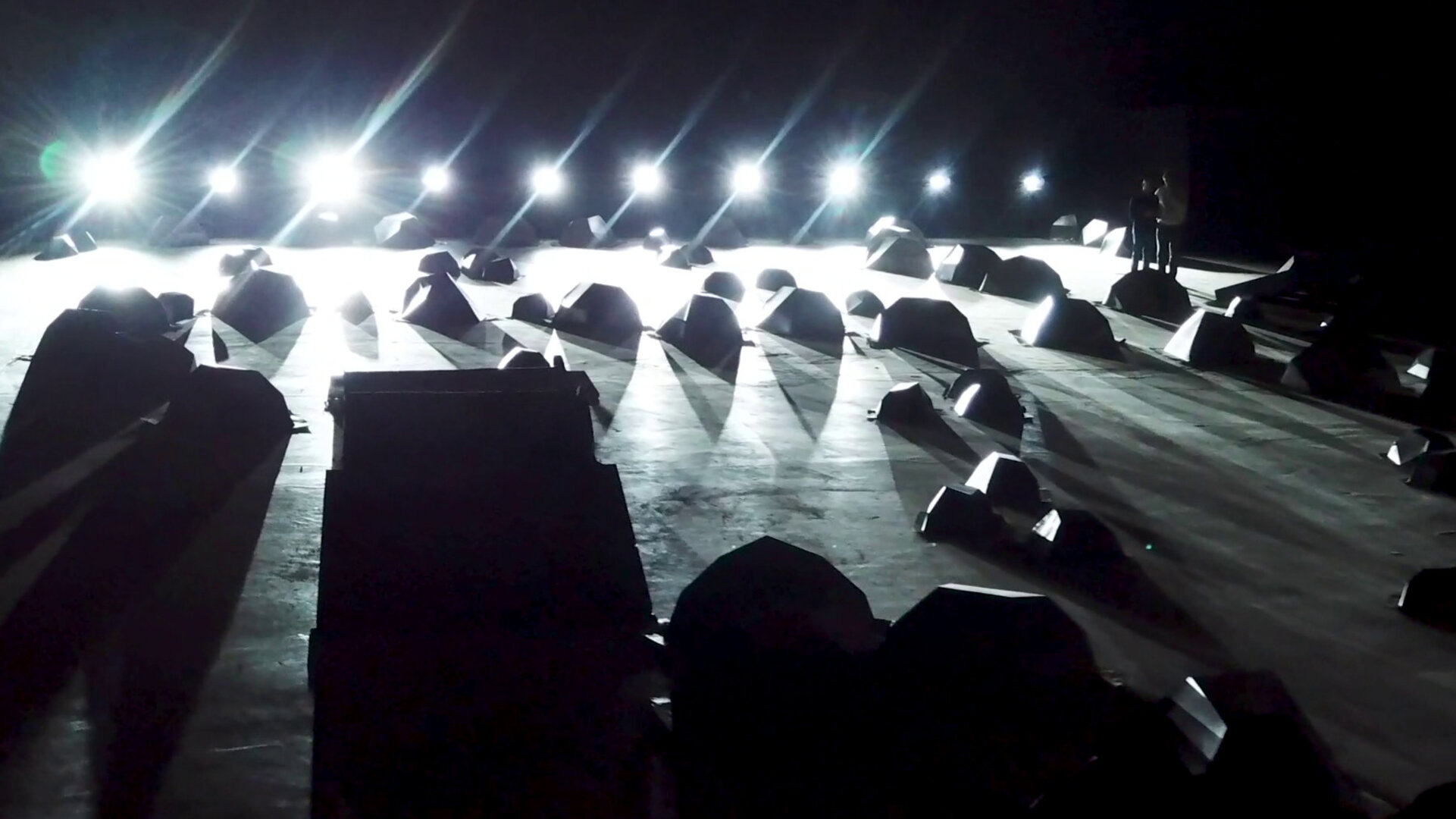29.03.2022

The poles of the Moon have emerged as enticing goals for future exploration, given their potential for harbouring water and other volatiles. So ESA and the European Space Resources Innovation Centre, ESRIC, challenged European and Canadian engineering teams to develop vehicles capable of prospecting resources within in these shadowy regions – then put their designs to the test in a realistic lunar analog environment. Five winning teams have now been selected from this challenge, receiving €75 000 contracts each to move their rovers forward to the next phase of the contest.
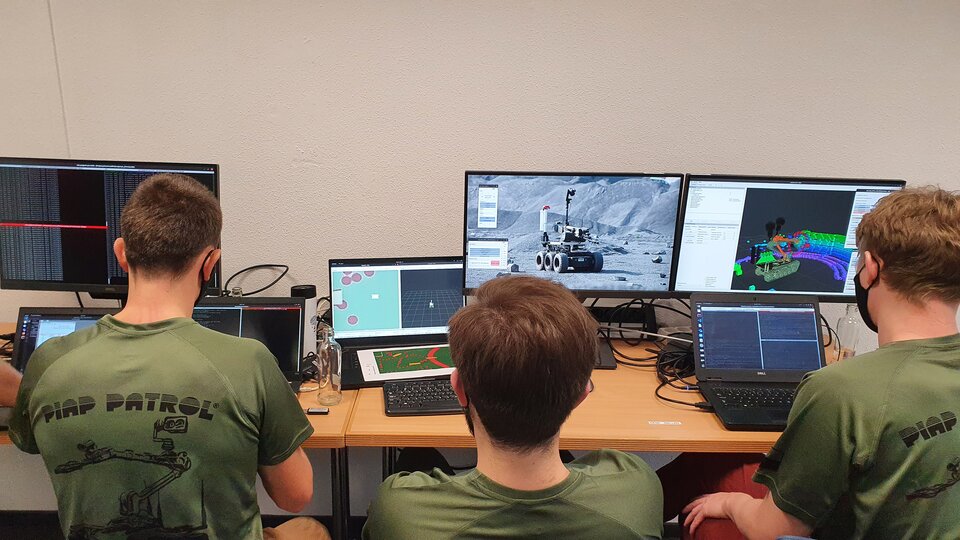
The winning teams are:
- ETH Zurich & University of Zurich (Switzerland)
- Mission Control Space Services (Canada)
- Łukasiewicz – PIAP (Poland)
- FZI Forschungszentrum Informatik (Germany)
- Space Application Services & Universite Du Luxembourg & Dynamic Imaging Analytics & La Palma Research Centre & University de Lorraine & The Open University (Belgium/Luxembourg/UK/Spain/France)
ESRIC Strategic Advisor and project manager Bob Lamboray states: “ESRIC is looking forward to welcoming these five winners from this phase to Luxembourg where they will compete in the lunar environment that we are building for this autumn’s second round. Through the ESRIC prize, we will support the final winner to further mature their design and hopefully make it to the Moon in the near future.“
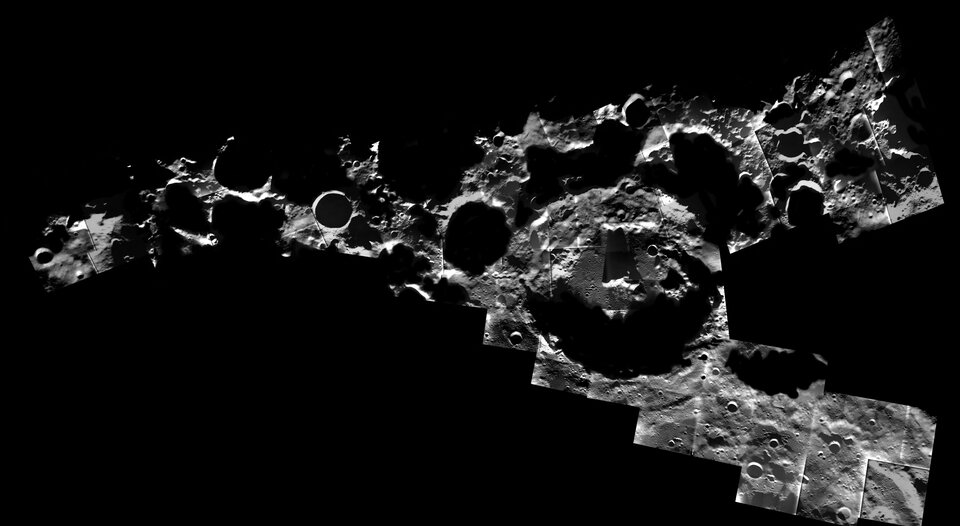
Inspiring the first field test of the ESA-ESRIC Space Resources Challenge is the fact that the lunar poles are very different from the flat, near-equatorial plains targeted by the 1960s-70s Apollo programme. Side-lit by a Sun that scarcely rises above the horizon, these crater-studded polar regions avoid the extreme temperature ranges experience by the rest of the Moon. Their shadows also conceal frozen water ice and other volatiles, potentially highly valuable for future human settlers.
This challenge looks forward to a time when robotic explorers search out usable resources as the first stage of ‘in-situ resource utilisation’ (ISRU) – employing such materials to boost the self-reliance and sustainability of Moon settlements.
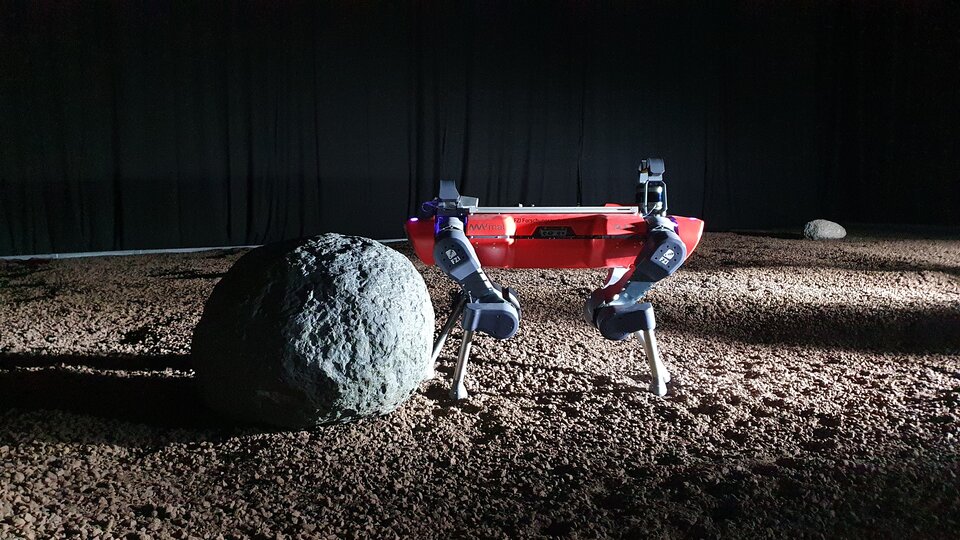
“The competing rovers had to navigate and map the whole test environment to prospect for useable resources – meaning first of all to track down their location, identify the best and safest passages to access them, then to gather information about the characteristics and the composition of the rocks they find,” explains Massimo Sabbatini, overseeing the contest’s first phase for ESA.
“The various teams took various approaches in terms of locomotion – we had wheeled, tracked and also walking vehicles – as well as visual and multi-spectral instrumentation, and in a few cases multiple instead of single rovers. The five out of 12 teams who move forward to the next stage receive a development grant to increase their technology readiness ahead of the second stage challenge, hosted by ESRIC in Luxembourg this autumn.”
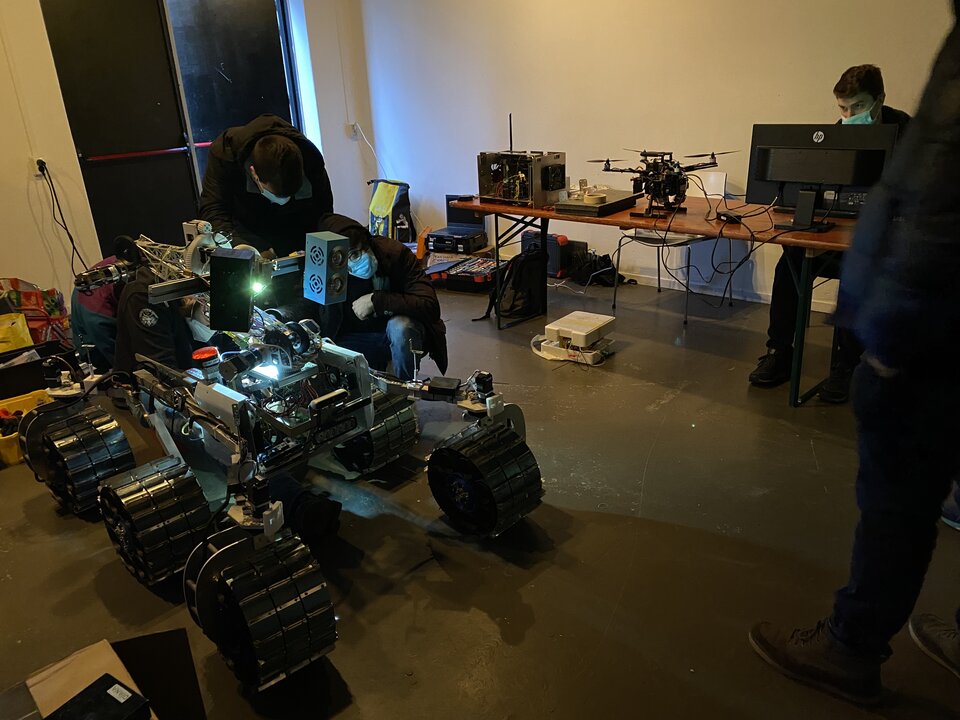
Working inside a former aircraft hangar, the competition organisers spread 200 tons of lava rock across an area equivalent to seven tennis courts, landscaping it into a Moon-like environment, including the main crater of interest. Then they scattered rocks, including a hundred larger simulated boulders larger than a metre across, whose positions were precisely geo-referenced.
These measurements served as the basis of map provided by ESA to the rover teams. The idea was to give them the equivalent level of local information they would get from satellite imagery in a 'real' mission, while still leaving smaller-scale surprises. Once complete, the moonscape was kept concealed from the rover groups behind black curtains, so they would see it only through the cameras on their rovers. The 13 teams each made their prospecting attempt one at a time.
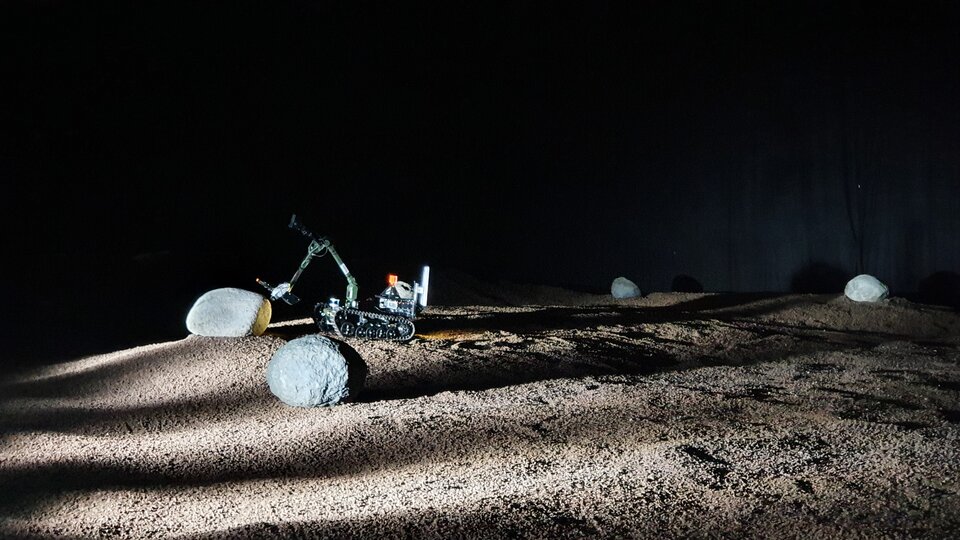
“Over a two and a half hour period, each rover had to find their way across the moonscape to the target crater, then prospect for resources,” comments co-organiser Franziska Zaunig, overseeing the contest’s second phase for ESA. “This was a challenging goal across unknown lunar terrain within the set time.”
Massimo adds: “Not everyone made it to the crater at all: some groups found they didn’t have sufficient lighting on their rovers, others suffered battery problems. A few had difficulties with the artificial signal delay we included, which simulates the actual experience of teleoperating to the Moon. But it’s fair to say that everyone learned a lot – including us.”
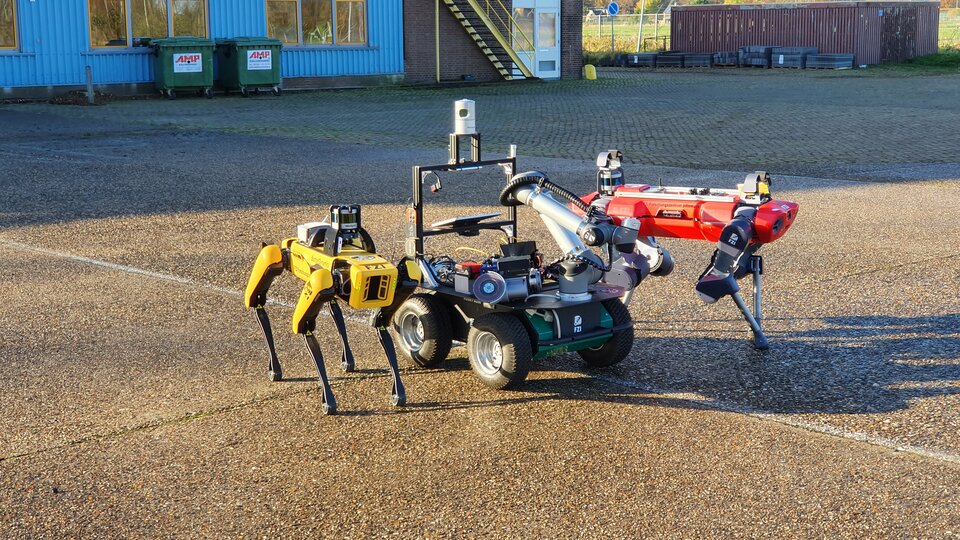
“All the teams told us they found the field test a very positive experience, including those who didn’t go forward,” adds Franziska.
“Everyone got a practical, high-pressure try-out of their technologies, helping highlight any features that still need improvement.”
This first part of the Space Resources Challenge was organised with the support of ESA’s Automation and Robotics section, developing advanced automation and robotic systems for space exploration. The section provided the support to two preparatory tests in ESTEC, the delay technology and the expertise needed to evaluate the performances of the 12 teams participating.

